Almanac: Warm Blood In A Cold Swamp
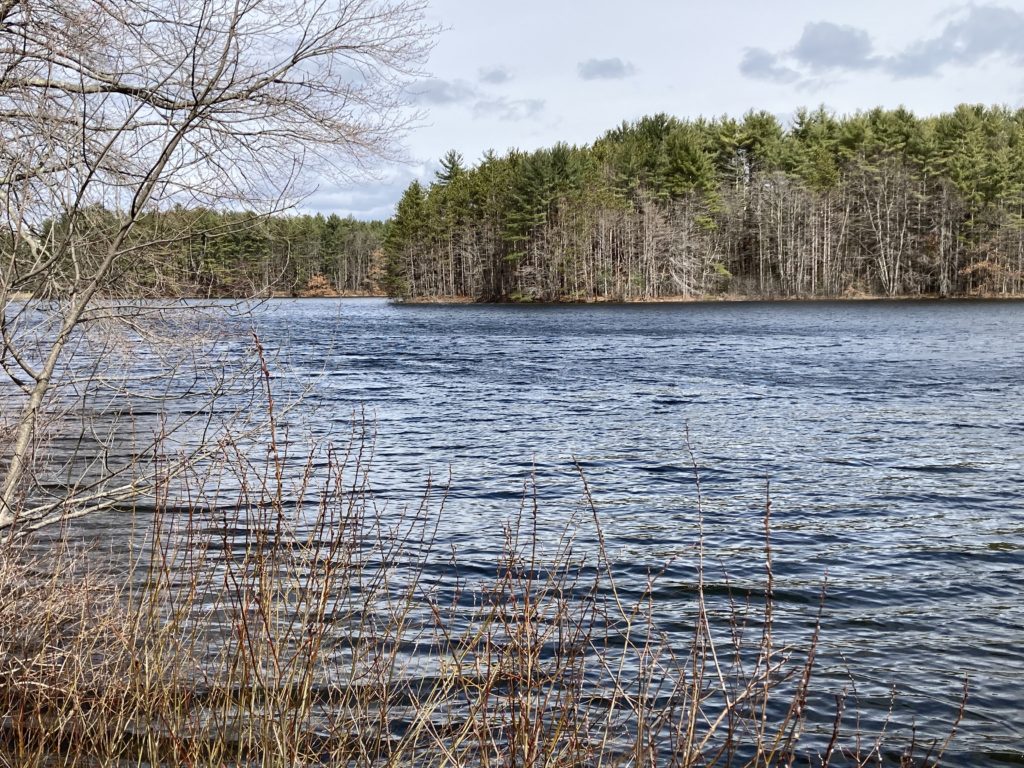
Atkins Reservoir On A Wintry March Day. Photo: Stephen Braun
I’ve been out and about lately poking around for two kinds of salamanders, about which I hope to write in the near future. I’ve see precisely zero salamanders thus far, even under salamander-friendly conditions (i.e., at night, while it’s raining). But the hunt has not been without its rewards. For example, on a ramble along the Robert Frost Trail from the Cushman area up to Atkins Reservoir last weekend I saw some beautiful moss…
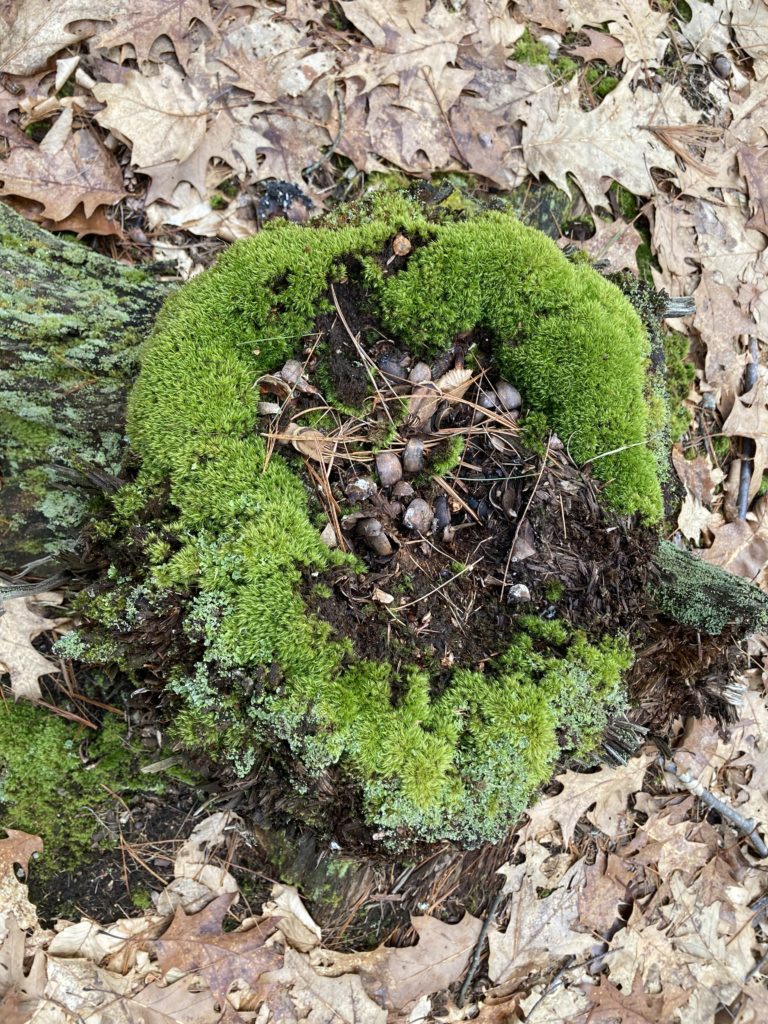
…a cute bird’s nest…
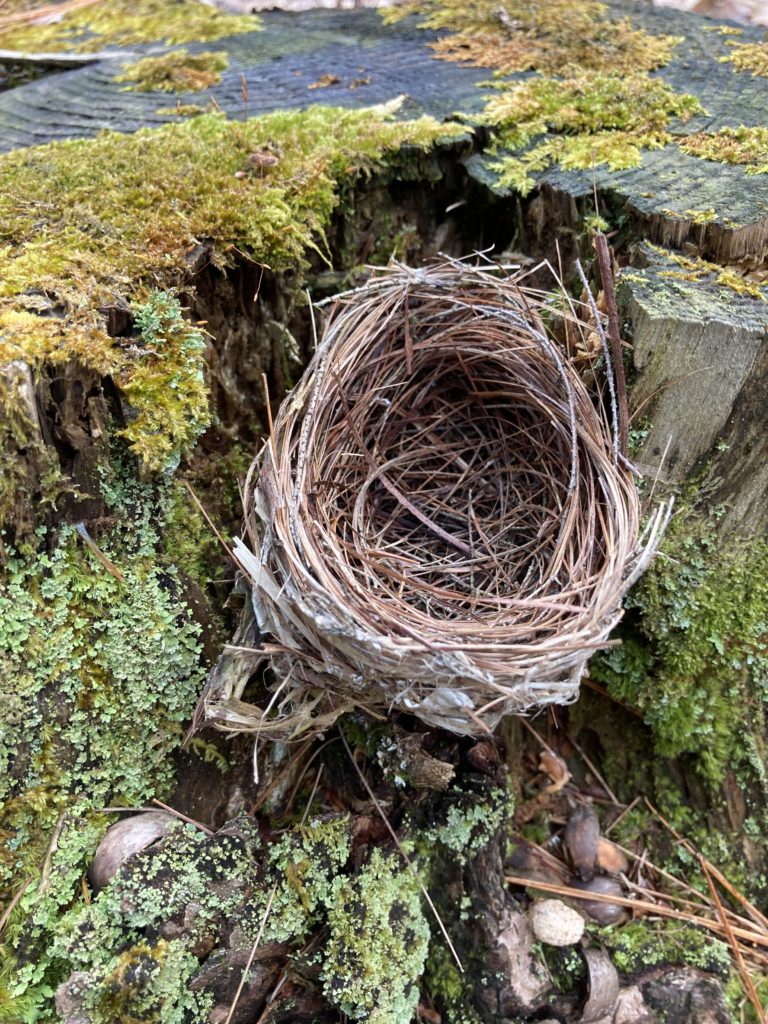
…and a very creative bit of sign desecration.
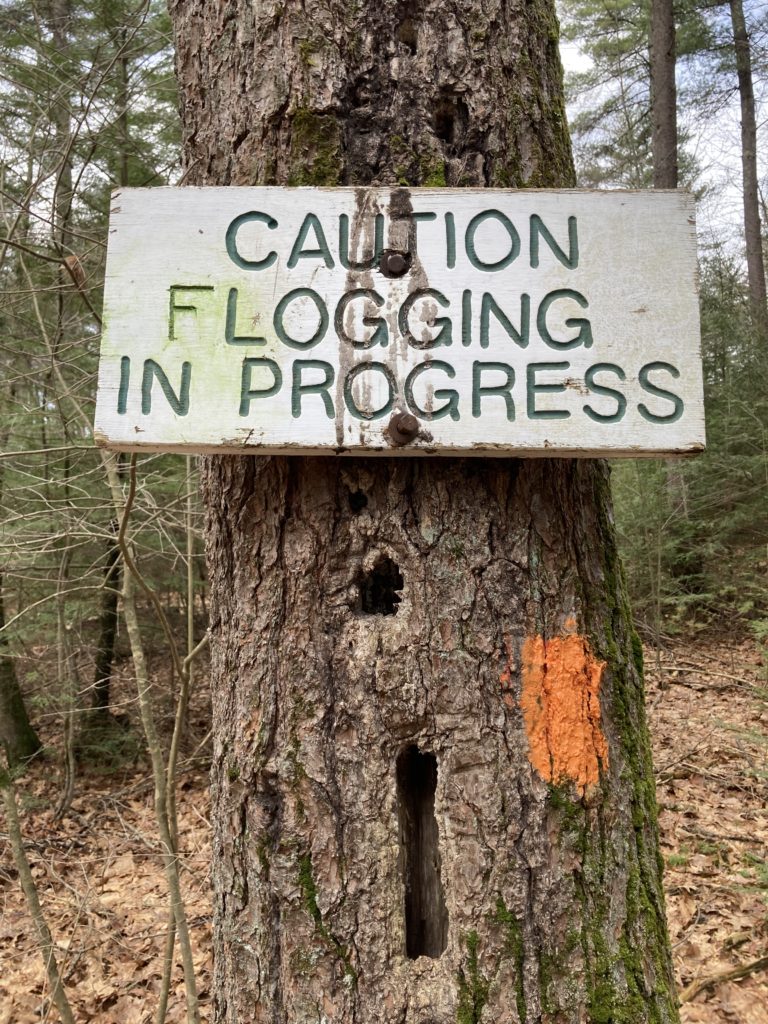
At one point I heard the distinctive sound of wood frogs singing from one of the swampy areas along the trail. These hard-to-spot creatures start singing quite early, like their smaller relatives the spring peepers. A wood frog chorus has been likened to the quacking of a flock of miniature ducks, an amusing image that helps me remember the sound. (You can hear them here, along with sounds of our other local amphibians.)
In another boggy area I came across the flowers of a truly remarkable plant: skunk cabbage. Yes, skunk cabbage. Stay with me. First the flowers. You’d be forgiven if you’ve never noticed these reproductive organs: they are anything but showy even though they are usually the first native flower to bloom in New England. (Snowdrops sometimes flower around the same time, but they’re not native.)
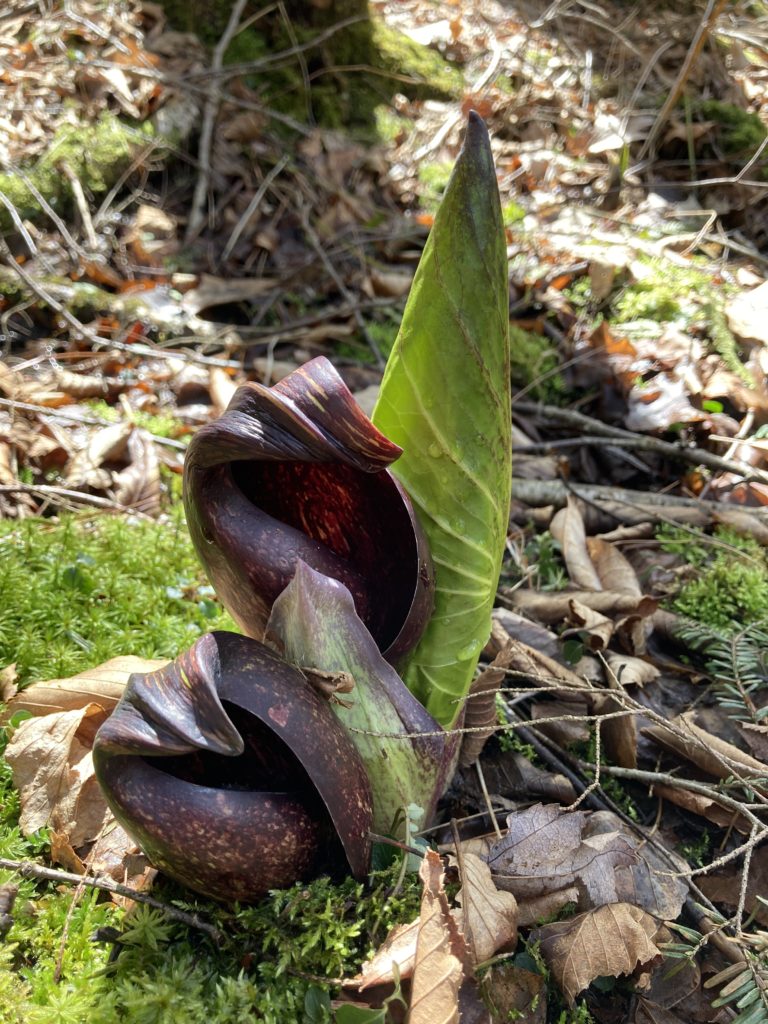
The skunk cabbage flower itself is concealed inside a mottled, greenish-purple hood poking up out of the muck. The hood is called the spathe and it’s a common feature of a large and prominent family of flowering plants called the arums. A familiar member of this family is the Jack-in-the-pulpit. Like “Jack” inside his “pulpit,” inside the skunk cabbage spathe is a thumb-like spadix covered with minute flowers, both male and female. Exactly which kinds of early-emerging critters pollinate these flowers is still not known, but some kind of flying insect is at work, which brings me to the remarkable bit.
Alone among our local native plants, skunk cabbage is “warm-blooded.” By metabolizing carbohydrates stored in its thick roots, skunk cabbages can raise the temperature of their flowers to 72 degrees F even when surrounding temperatures are much lower. The spathes can literally melt their way through a layer of snow. It is theorized that the heat serves several roles: exposing the spathe so that early insect pollinators can gain access, increasing the volatility of the aromas produced to attract those insects, and providing a warm shelter for the pollinating insects. Skunk cabbage thermogenesis lasts for about two weeks, corresponding to the maturation of the flowers on the spadix, and the total amount of heat produced has been estimated to equal that of a small mammal, such as a mouse.
The flowers I observed were probably nearing the end of their reproductive cycle. They didn’t feel warm to the touch and rising nearby were the vividly green unfurled leaves of the mature plant, a sign that the pollination period is ending.
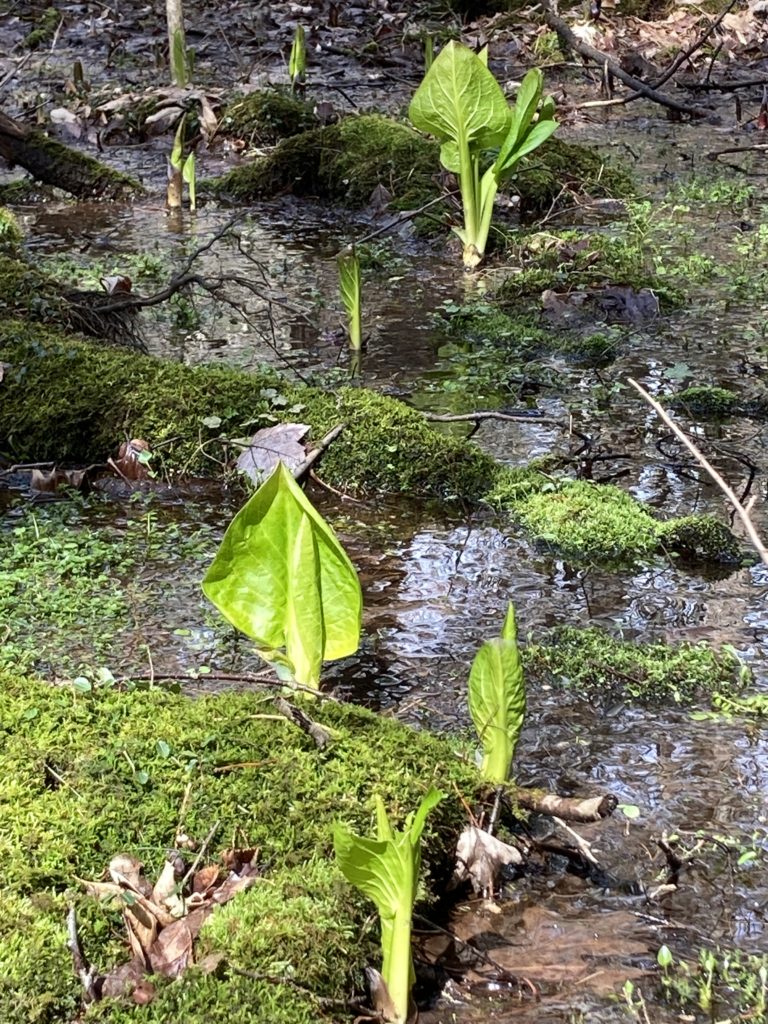
Since skunk cabbage leaves are usually the first new green to appear in spring they stand out vividly against the prevailing grey/brown/black of the swamp, thus inviting the attention of winter-hungry animals. It’s not surprising, therefore, that the leaves are heavily defended. When crushed they emit the profoundly skunky, fetid odor alluded to by both their common and Latin names: Symplocarpus foetidus. The odor alone is probably a deterrent, but the leaves also contain calcium oxalate, a bitter-tasting compound also found in rhubarb leaves.
A couple of days after my walk the temperature plunged to below 20 F at night, which may have killed those unfurled leaves. I haven’t gone back to check, but I’ve read that it’s not just the spathe/spadix parts of the plant that can generate heat, so maybe those leaves survived the sudden freeze. Even if they didn’t, of course, the plant has plenty of energy stores to generate new leaves…but I can’t help hoping the leaves, like us similarly cold-vulnerable mammals, managed to outwit this last gasp of winter.
Almanac is a regular Indy column of observations, musings, and occasional harangues related to the woods, waters, mountains, and skies of the Pioneer Valley. Please feel free to comment on posts and add your own experiences or observations.
